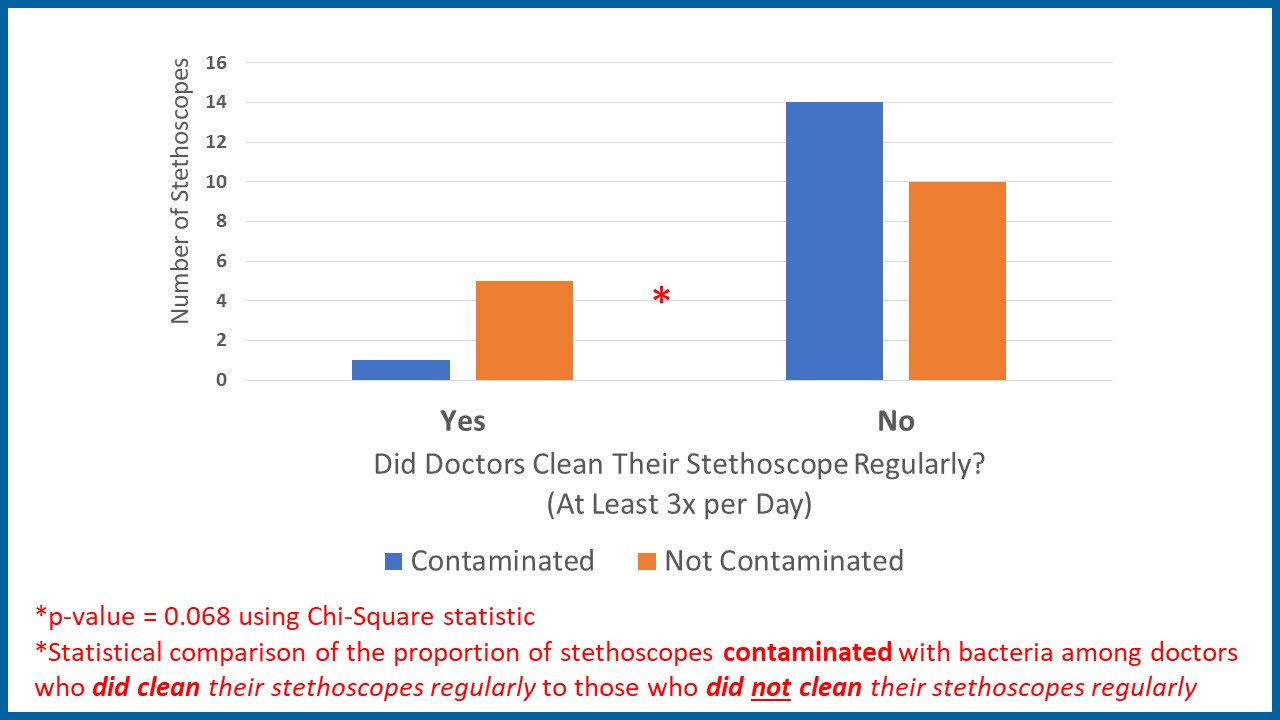Background: Studies indicate that physicians do not clean their stethoscopes regularly, and stethoscope surfaces become contaminated with bacteria. Neither the frequency with which stethoscopes deserve cleaning nor simple, practical cleaning approaches have been well-established for hospitalists or other inpatient clinicians. Our aim was to determine bacterial contamination of stethoscopes directly from a hospital doctor’s white coat pocket, after simple cleaning, and after examining a single patient.
Methods: We surveyed 30 hospital physicians on stethoscope cleaning practices and then evaluated diaphragm surfaces of their stethoscopes by swabbing each stethoscope: a) before cleaning (directly from the doctor’s coat pocket), b) after simple cleaning with an alcohol-based hand sanitizer, and c) after the stethoscope was used to examine one patient. Bacterial growth from Agar-plated Petri dishes were measured after 96 – 120 hours. We compared bacterial growth on each stethoscope surface pre-cleaning to post-cleaning; and post-cleaning to after-1-patient using Fisher Exact Test. We also compared stethoscope surface bacterial growth among physicians who reported regular cleaning of their stethoscope to those who did not report regular cleaning.
Results: Only 20% of physicians reported cleaning their stethoscopes regularly (≥3 times per day). Before cleaning (i.e. directly from coat pocket), 50% of stethoscopes were contaminated with bacteria (>3 colonies), compared with 0% of stethoscopes contaminated with bacteria after cleaning (p<0.001); and 30% of stethoscopes contaminated with bacteria after seeing just one patient (p=0.002). Among physicians who did not report cleaning stethoscopes regularly, 58% were contaminated compared with 17% of stethoscopes among physicians who did report cleaning them regularly (p=0.068, FIGURE).
Conclusions: Hospital physicians’ stethoscopes had high probability of bacterial contamination when measured straight from their white coat pockets and after examining just one patient. While some physicians clean their stethoscopes after examining patients, our study suggests that stethoscope contamination at the time of physical examination likely could be reduced or prevented if physicians clean their stethoscopes using alcohol-based hand cleansing solution just before examining each patient.

